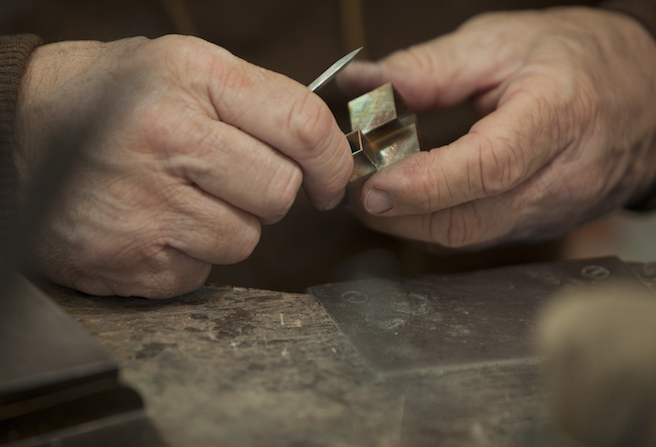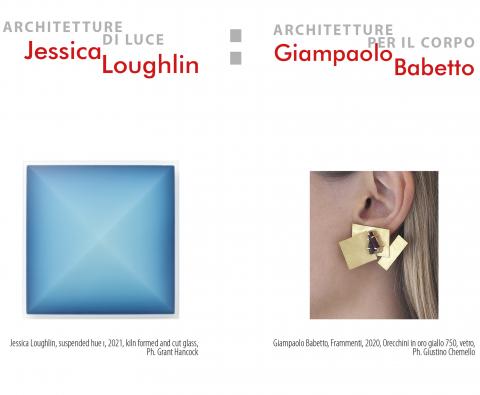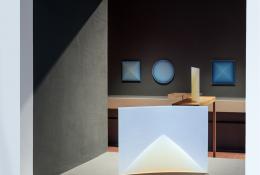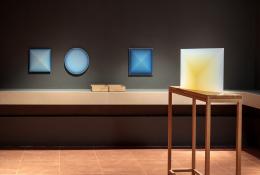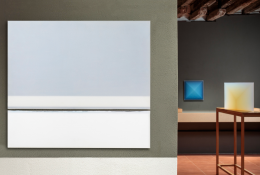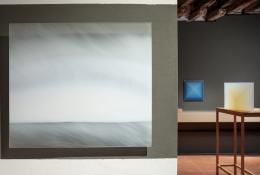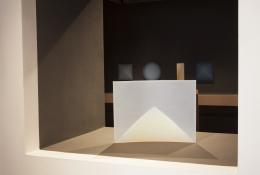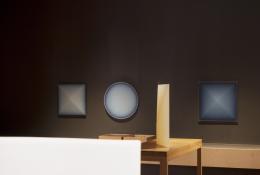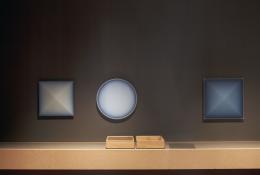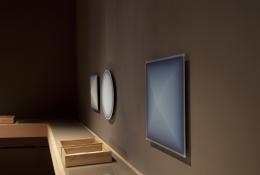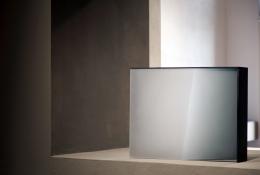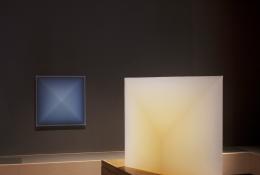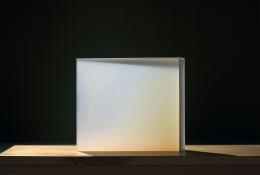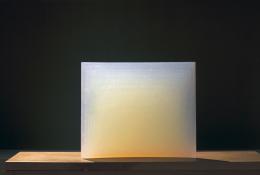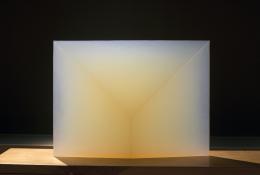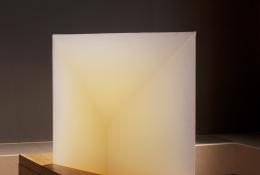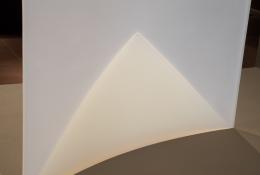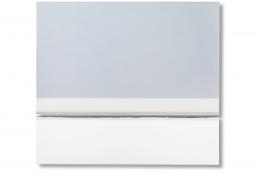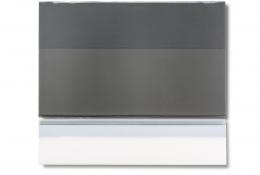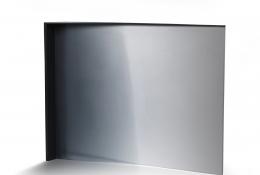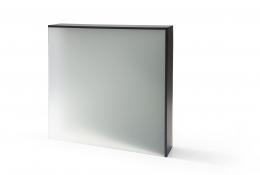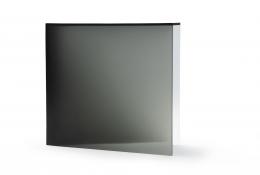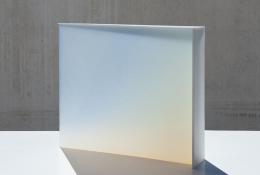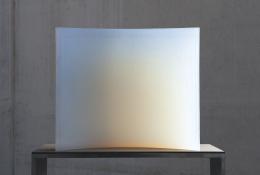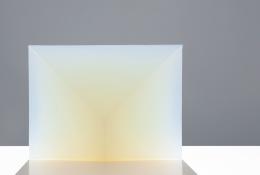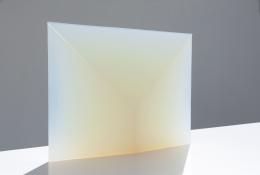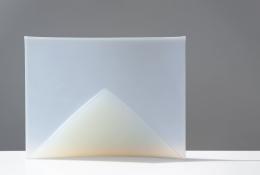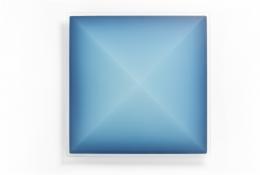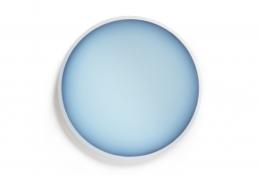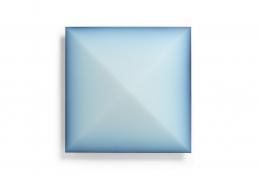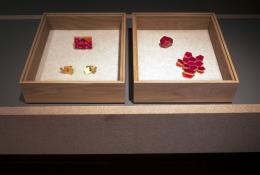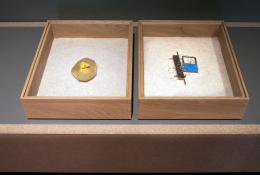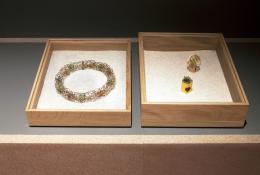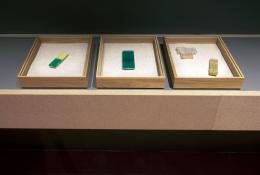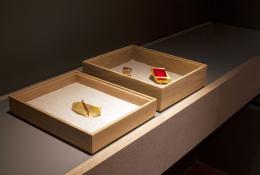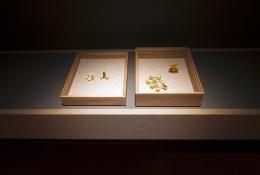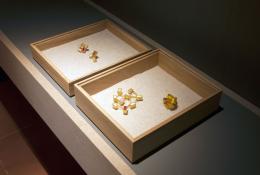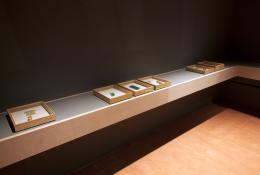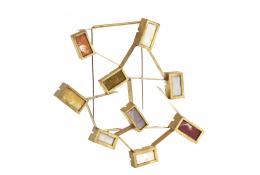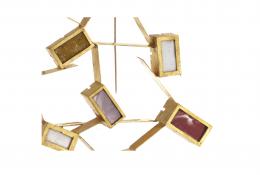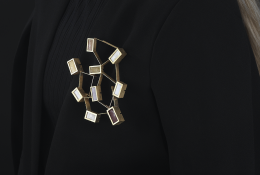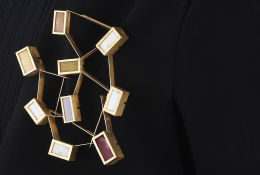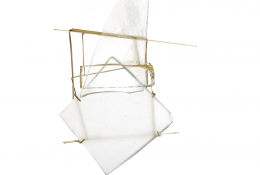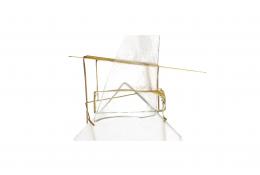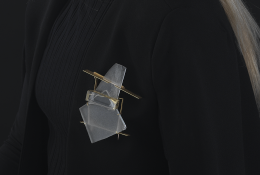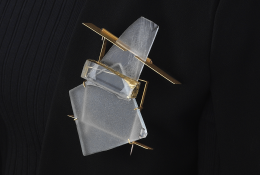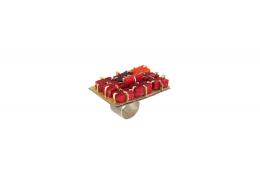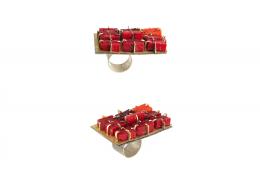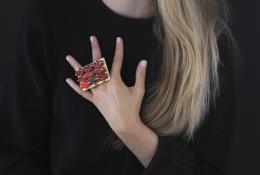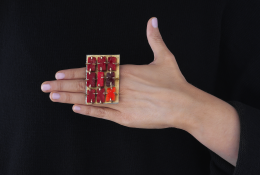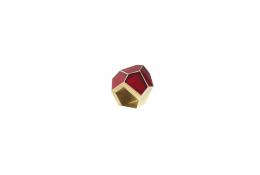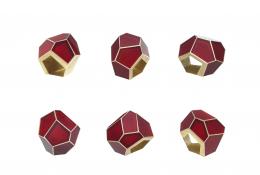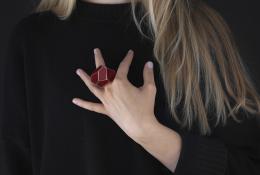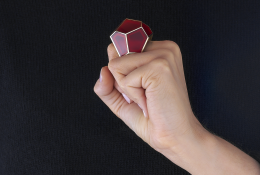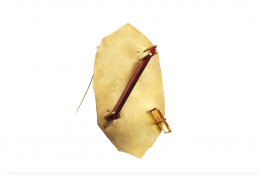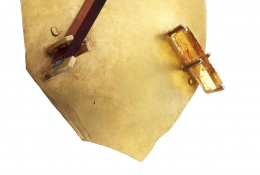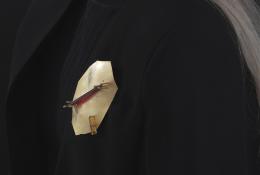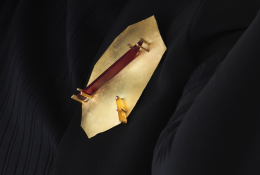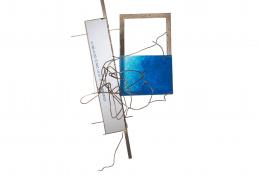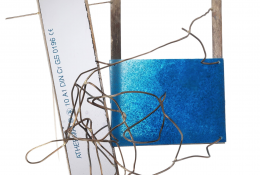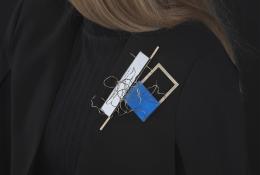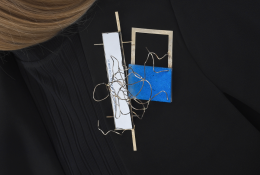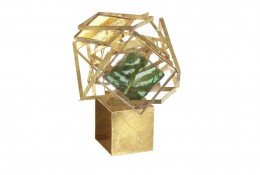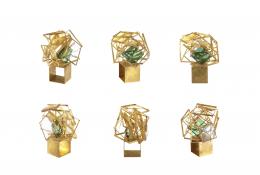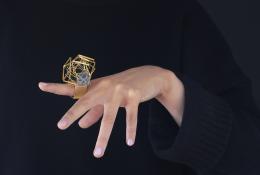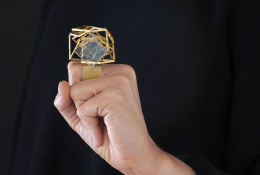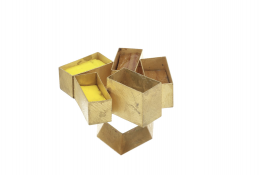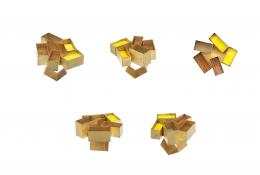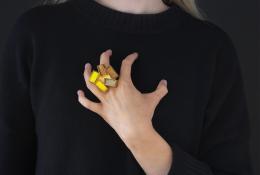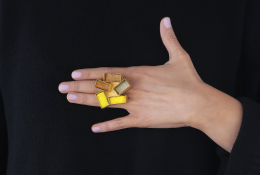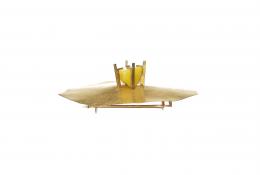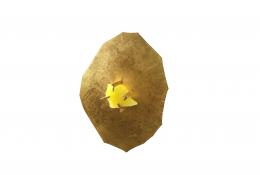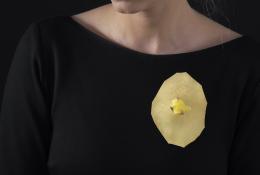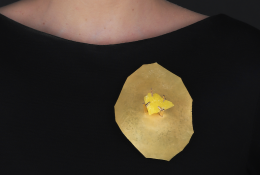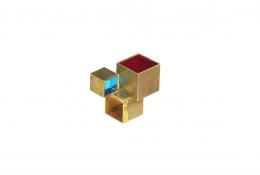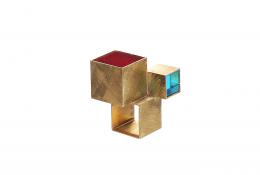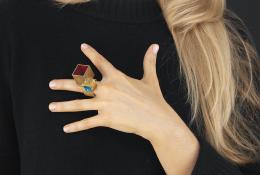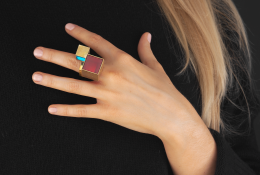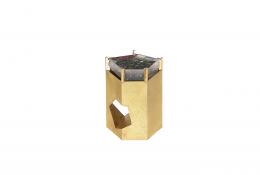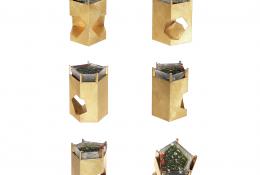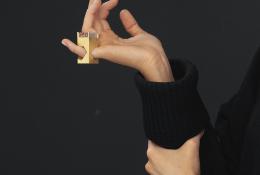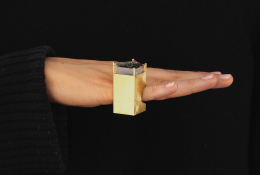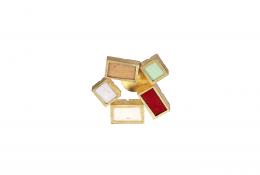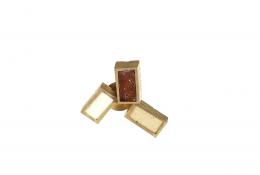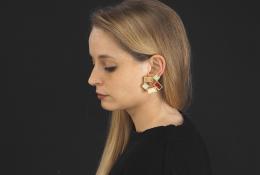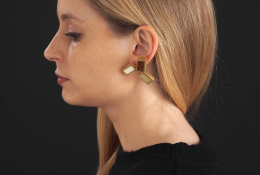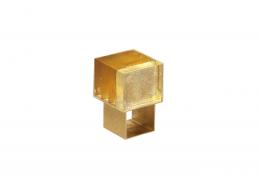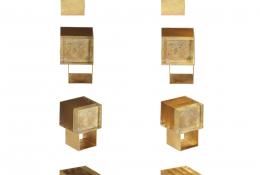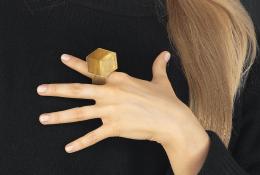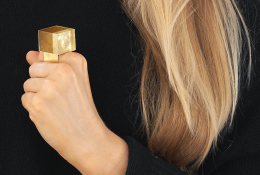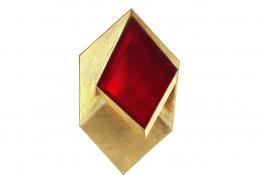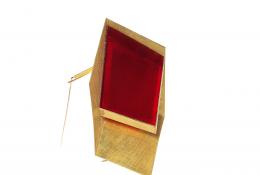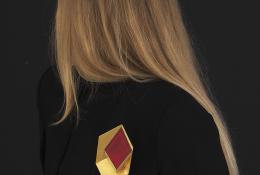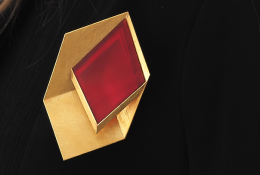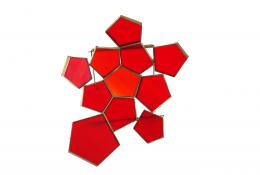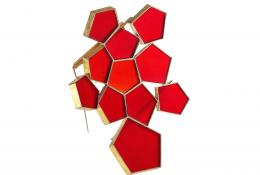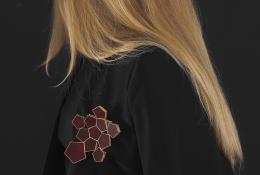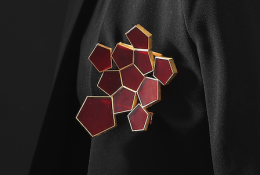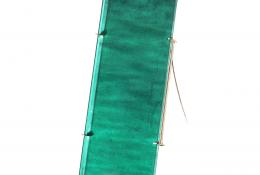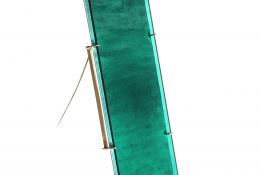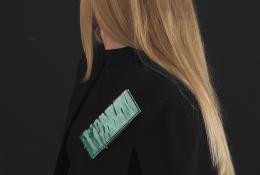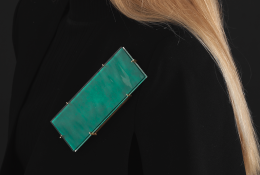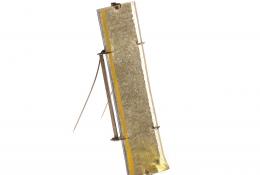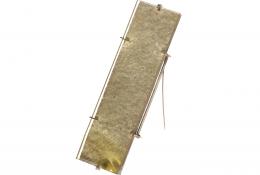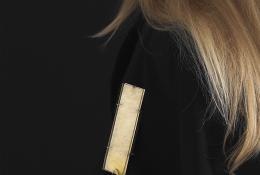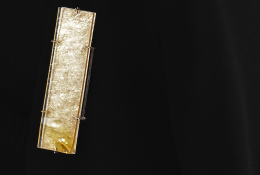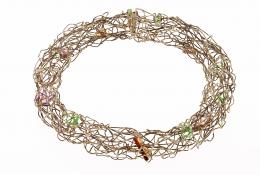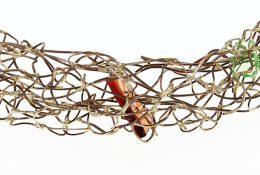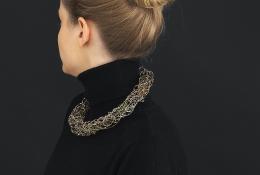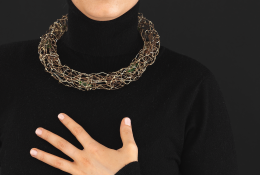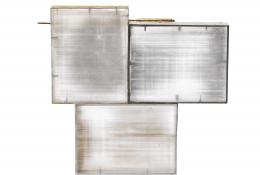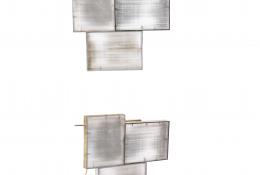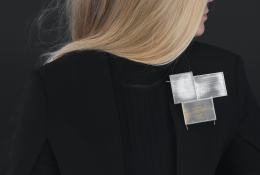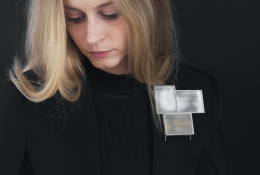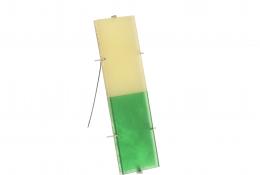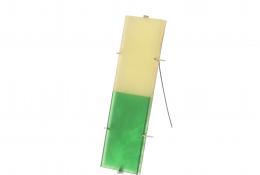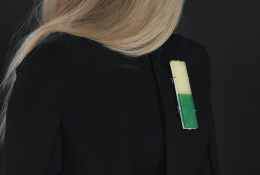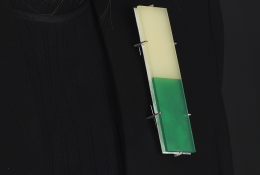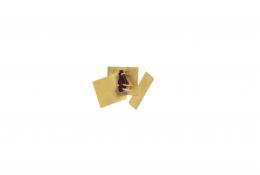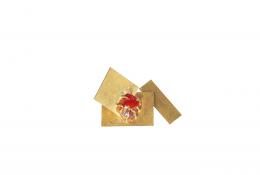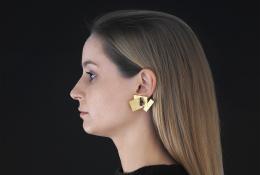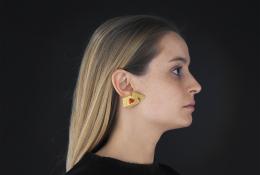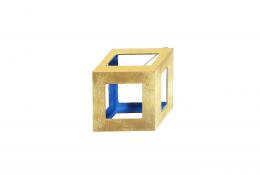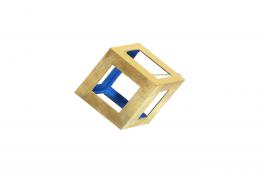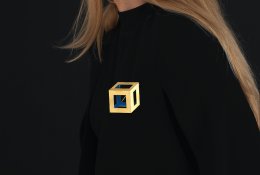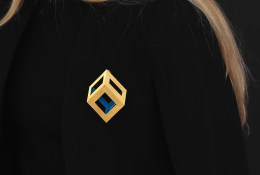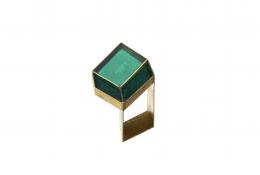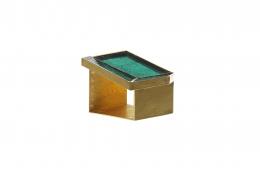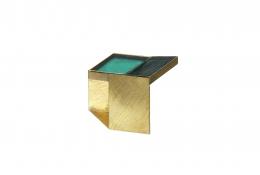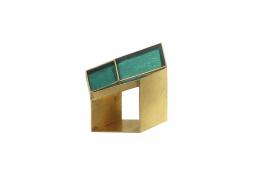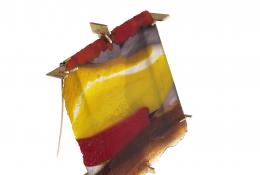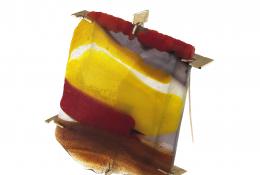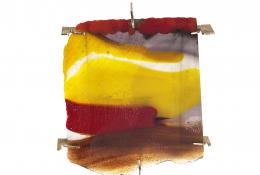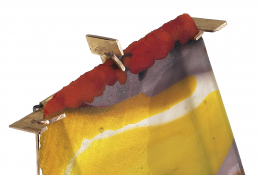Architetture di Luce | Architetture per il Corpo
THE EXHIBITIONS ARE GOING TO CONTINUE UNTIL OCTOBER 30, 2021
In Venice, coinciding with the opening of La Biennale di Venezia: The 17th International Architecture Exhibition, Caterina Tognon presents the latest glass works, both sculptural and two-dimensional, by Jessica Loughlin (Melbourne, 1975) and the gold and glass jewels by Giampaolo Babetto (Padua, 1947).
Two artists distant in geography, temporality and productive sphere but close in terms of a common creative thought aimed at simplifying images and complex forms.
Both of them – Babetto in 2019, Loughlin in 2020 – entered the short list of the Loewe Foundation Craft Prize, an important international competition created by the Creative Director Jonathan Anderson and aimed at enhancing the great excellence in contemporary decorative arts.
Jessica Loughlin | Architetture di Luce – Architectures of Light
Jessica Loughlin creates Architectures of Light inspired by the austere and infinite Australian landscape. Her works tell of the colour of distance: the blue of the horizon that is lost at the edge of the world, the light that changes during the passing of the day and of the tides and the fluid movement of the water as it flows again on the bed of the salt lakes.
“My material is both glass and light” writes Loughlin “I use glass to sculpt light and shadow.”
Poised between idealised spaces and material surfaces, Loughlin uses glass in an experimental way, using a limited colour palette from which she creates infinite shades combined with variations of translucence, opacity and gloss. The opaline glass she uses in the three- dimensional sculptures reacts with light, changing in a way similar to the light in the sky as night falls.
Loughlin is interested in conveying an emotional response not to a place itself, but to the idea of a place, representing the moment in which the distinction between external landscape and internal feeling disappears.
Loughlin could be described as a Post-Minimalist artist whose works pay homage to emptiness and transmit mental calm to the viewer: a sense of infinity, a meditative state.
"The first thing is the light. Always, everywhere.
How it strikes – with brilliant intensity, or gently, with a caress. Jessica Loughlin lives on a north-facing hill near Adelaide. From there she can see the entire horizon; every night, she watches the delicate pinks of the setting sun settle on bare palebrown hills opposite. Adelaide is on the eastern shore of the enormous shallow Gulf St. Vincent; many times larger than Venice’s Lagoon, it is similarly a place of misty vistas; the sun renders its long sands pearly, then grey, in its diurnal transit – tidal #1 and tidal #2, both 2006, with their hovering horizons, evoke that endless natural cycle, here stilled momentarily. Equally important, for many years Loughlin has been walking off-track with her partner, and in 2020 also with her young daughter, in arid regions hundreds of kilometers north of Adelaide, those great open life-filled lands of inland Australia, especially the vast salt lakes such as Lake Frome (Munda) and Lake Eyre (Kati Thanda), where the effects of shifting light are extraordinary. This is what we see in the two receptor for light pieces, which register constant changes in the light at these remote locations, and how one is completely immersed in an envelope of luminosity. And when she is there, Loughlin is always looking: scanning, shifting position, contemplating location – slowly, over time, over successive visits and long walks. And then she listens to the silence. Glass is Loughlin’s material but seeing, experiencing, being, in those full quiet un-peopled resonant spaces is her subject. Most importantly, she considers the light that makes these places and those moments, which are absolutely distinct from any others. This is what she gives us: she conjures the hanging pale blue firmament above the vast Australian desert lands, responds to its expanses with radical simplicity, and to its shimmering distances with the substance of the glass itself. Opaline glass, as it happens, behaves very like light in the sky: it reflects blue light but transmits warm tones, so Loughlin’s pieces subtly shift in colour as ambient light changes in their environment. receptor for light xiv and receptor for light xv, 2021, for instance, reward long looking, just as the view from the top of a hill will reveal, gradually, nuances previously unsuspected. Spend time with them; walk around them; let your eyes settle and your heart rate slow right down. And what of the Loughlin’s use of blue? That blue that always, I think, hints at the sacred? I see the heavens above in suspended hue i and suspended hue ii, both 2021, as if the firmament includes a glorious tent hanging above the universe, like the sky-dome of the ancient philosophers, as well as the structure of the salt crystals that was the original impetus for the works. With pale blue dot ii, 2021, on the other hand, are we inside the heavens or looking back at the Blue Planet from deep space? These options are open, as Loughlin invites us to speculate on our place in this light-filled world. Which brings me to the distinction between luce, light itself, and lumen, described scientifically as ‘a unit of luminous flux equal to the light emitted in a unit solid angle by a uniform point source of one candle intensity.’ Jessica Loughlin’s exploration of glass exploits precisely this distinction: she unlocks the transcendent peace bestowed by the light of open unpeopled landscapes, that sense of release from self that is the particular gift of the sea, or the desert, through working the paradoxical capacities of glass. Light has entered the studio, and leaves it locked into glass"
Julie Ewington Sydney, Australia, May 2021
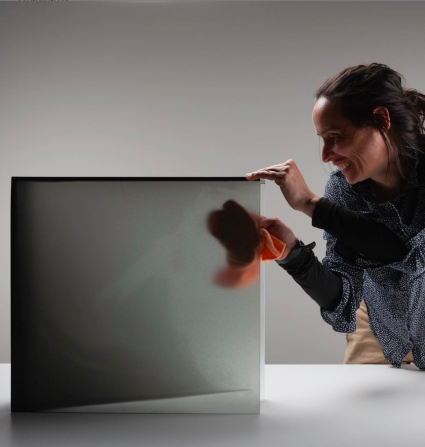
Giampaolo Babetto | Architetture per il Corpo – Body Architectures
Giampaolo Babetto, a Paduan artist dedicated to the art of goldsmithing but also to architecture, design and photography, is one of the Masters of the Paduan Goldsmith School: an artistic movement born in the mid-1950s, primarily thanks to Master Mario Pinton, on the benches of the goldsmith section of the “Pietro Selvatico” Art Institute of Padua.
The artists of the School are inspired by the principles of the study of bodies moving in space; the look at architecture as design rigor and research in constructive detail; the in- depth analysis of material and construction techniques; the knowledge of sculpture – both ancient and contemporary – along with the awareness that from knowledge a jewel can be born as a work of art.
Working on this topic gives Babetto new ideas and leads him to constructive insights that become creative forms. To him, a jewel is "a simple and autonomous entity, extraneous to any subjective and symbolic reflection that is not the very process of its construction". (Germano Celant, Giampaolo Babetto, SKIRA editions, Milan 1996)
Caterina Tognon has been exhibiting contemporary glass since 1991 and for this exhibition Babetto has chosen to work with glass, a fragile material par excellence, combining it with gold, which is both pliable and durable. Two materials in antithesis, different and distant in characteristics and appearance, but harmoniously close in the synthesis of Babetto’s creations.
His works inhabit the body and live on its supple and constantly moving surface, exactly as it happens in architecture where people animate the buildings and make them come alive. “Jewelry and Architecture thus become the extremes of a dialogue that has as its meeting points that of the body in motion”. (Domitilla Dardi, Corpo movimento struttura. Il gioiello contemporaneo e la sua costruzione, Manfredi editions, Imola 2018)
